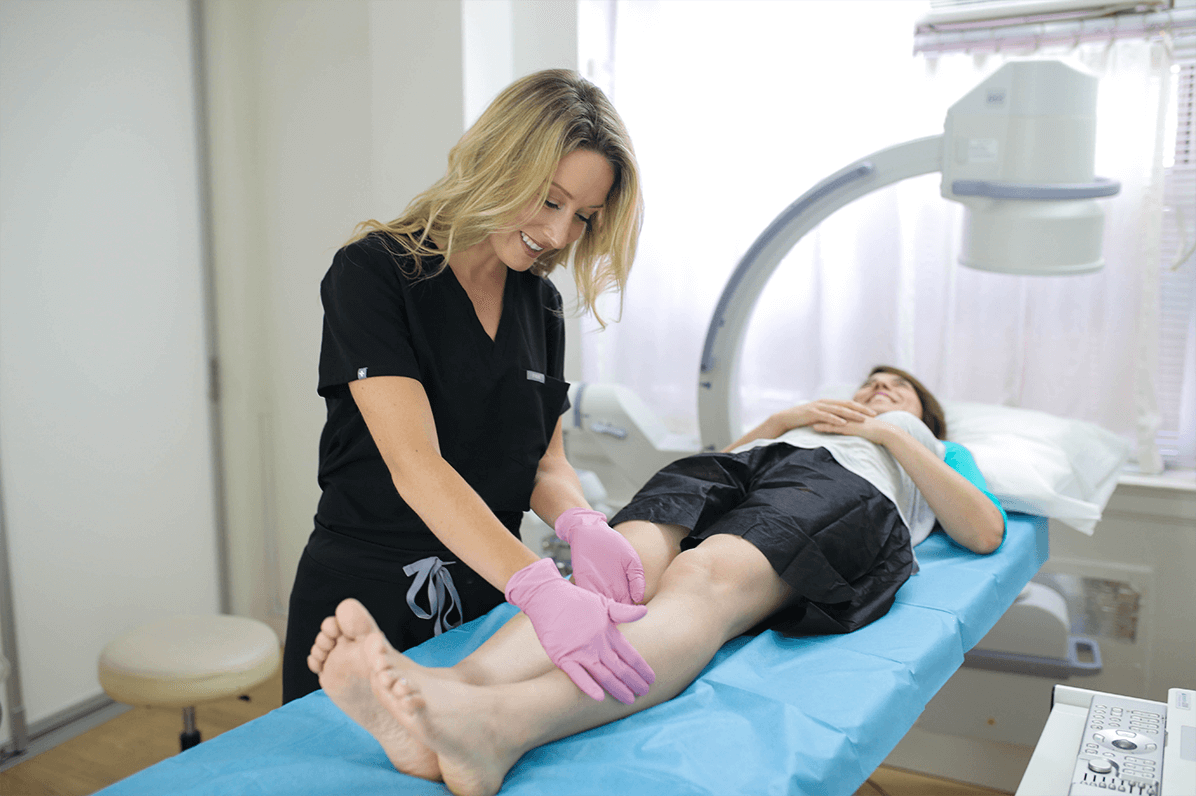If you live in Suffolk or Nassau County and struggle with visible veins, swelling, or leg discomfort, you may be searching for the best Long Island vein treatment options. Modern medicine has made vein care safer, faster, and more comfortable than ever before. Today, patients can receive relief without surgery, lengthy recovery, or hospitalization. Understanding your options helps you make confident decisions about your vascular health and find the right specialist for long-term results.
Before exploring treatment options, it helps to know what is a varicose vein specialist called. The medical term is a vein doctor, also known as a phlebologist or vascular specialist. These physicians diagnose and treat conditions such as spider veins, varicose veins, venous insufficiency, and other circulation disorders. On Long Island, many clinics—such as Vein Treatment Long Island—offer minimally invasive options performed by board-certified experts.
Below, we break down the most effective vein treatment options, how they work, and what you can expect.
What Is the Best Minimally Invasive Treatment for Varicose Veins on Long Island?
The best modern treatments are minimally invasive, meaning they require only a tiny puncture instead of surgical incisions. These procedures deliver excellent results with minimal downtime.
1. Endovenous Laser Treatment (EVLT)
EVLT is one of the most popular treatments for varicose veins on Long Island. Physicians use a laser fiber to seal diseased veins from the inside. The laser energy closes the problematic vein, allowing blood to naturally redirect into healthier pathways.
Why it’s effective:
- Over 95% long-term success rate
- Performed in under an hour
- Little to no discomfort
- Quick return to walking and normal activity
EVLT is ideal for larger varicose veins caused by venous insufficiency.
Why Is Radiofrequency Ablation an Effective Choice?
Radiofrequency Ablation (RFA) is another top option for treating the root cause of varicose veins. Instead of laser heat, RFA uses controlled radiofrequency energy to close the malfunctioning vein.
Benefits of RFA:
- Very gentle heat
- Minimal soreness
- Fast recovery
- Excellent cosmetic and medical outcomes
RFA is widely recommended by vascular specialists for its comfort and proven effectiveness.
What Makes Sclerotherapy an Excellent Option for Spider Veins?
When it comes to spider veins, most Long Island patients choose sclerotherapy. This minimally invasive procedure involves injecting a safe solution into the vein, causing it to collapse and fade over time.
Why patients prefer sclerotherapy:
- No anesthesia needed
- Extremely quick sessions
- Highly effective for small veins
- Suitable for legs, ankles, and even facial areas
Because sclerotherapy works best for smaller veins, specialists often combine it with other treatments to address underlying venous insufficiency.
How Does Foam Sclerotherapy Help Treat Larger Veins?
For stubborn or moderately enlarged veins, foam sclerotherapy offers a stronger, more targeted solution. The foam fills the vein more efficiently than liquid, making it ideal for twisted or hard-to-reach veins.
Advantages of foam sclerotherapy:
- Enhanced penetration
- Great alternative for veins unsuitable for laser
- No downtime
This option is excellent when paired with other procedures to ensure long-lasting results.
What Is VenaSeal, and Why Do Patients Love It?
VenaSeal is a medical adhesive used to seal abnormal veins. Unlike thermal treatments, VenaSeal does not require heat, tumescent anesthesia, or compression stockings.
Why VenaSeal stands out:
- Nearly pain-free
- Fast recovery
- No post-procedure compression required
- Great option for patients who prefer non-thermal therapy
Many Long Island residents appreciate VenaSeal for its convenience and comfort.
What Role Do Ultrasound-Guided Treatments Play?
Ultrasound guidance ensures that your Long Island vein treatment is precise and effective. By mapping blood flow, specialists can locate diseased veins and treat them accurately.
Ultrasound guidance is essential for:
- Diagnosing venous insufficiency
- Evaluating vein structure
- Monitoring the position of catheters or needles during treatment
This technology ensures a safer, targeted, and more successful outcome.
What Are the Advantages of Choosing Minimally Invasive Vein Treatments?
Today’s minimally invasive treatments offer significant advantages over traditional surgery. Older methods, such as vein stripping, required general anesthesia and lengthy recovery. Modern options now offer:
- Short in-office procedures
- No general anesthesia
- Minimal discomfort
- Immediate walking after treatment
- Return to daily life within hours
- High success rates
- Minimal scarring
Because of these benefits, most Long Islanders choose modern therapies over outdated surgical techniques.
What Symptoms Suggest You Need Vein Treatment?
Many people assume vein issues are only cosmetic, but underlying venous insufficiency can cause uncomfortable symptoms, including:
- Aching or heavy legs
- Swelling in legs or ankles
- Cramping or throbbing
- Restless legs
- Itchy or burning veins
- Skin discoloration
- Bulging or twisted veins
If you experience any of these, consulting a vein doctor—again, what is a varicose vein specialist called?—a phlebologist or vascular specialist—can help you find relief.
How Do You Choose the Right Vein Specialist on Long Island?
With many clinics offering vein services, it’s essential to choose a reputable center with experienced specialists. Look for:
- Board-certified vein doctors
- Advanced ultrasound technology
- Minimally invasive treatment options
- Personalized treatment plans
- Proven patient results
- Comfortable, modern facilities
Renowned practices such as Vein Treatment Long Island emphasize patient comfort, medical accuracy, and long-term results.
What Should You Expect During a Vein Treatment Consultation?
A typical vein consultation includes:
- Medical history review
- Symptom evaluation
- Ultrasound imaging
- Diagnosis of venous insufficiency
- Customized treatment plan
- Discussion of insurance coverage
Most minimally invasive treatments are covered by insurance when medically necessary.
Why Act Now Instead of Waiting?
Vein issues rarely improve on their own. Over time, untreated venous insufficiency can worsen and lead to:
- Increased pain
- Swelling
- Skin changes
- Blood clots
- Leg ulcers
Early treatment ensures better results and prevents long-term complications.
Final Thoughts
Choosing the right Long Island vein treatment can dramatically improve your comfort, mobility, and confidence. With modern, minimally invasive options like EVLT, RFA, sclerotherapy, foam therapy, and VenaSeal, patients can enjoy quick recovery and long-lasting results. When performed by a skilled vein specialist—also known as a phlebologist or vascular doctor—these treatments provide both medical relief and cosmetic enhancement.
Whether you’re struggling with spider veins, varicose veins, or leg symptoms, consulting an experienced clinic like Vein Treatment Long Island can help you take the first step toward healthier legs and improved circulation.


